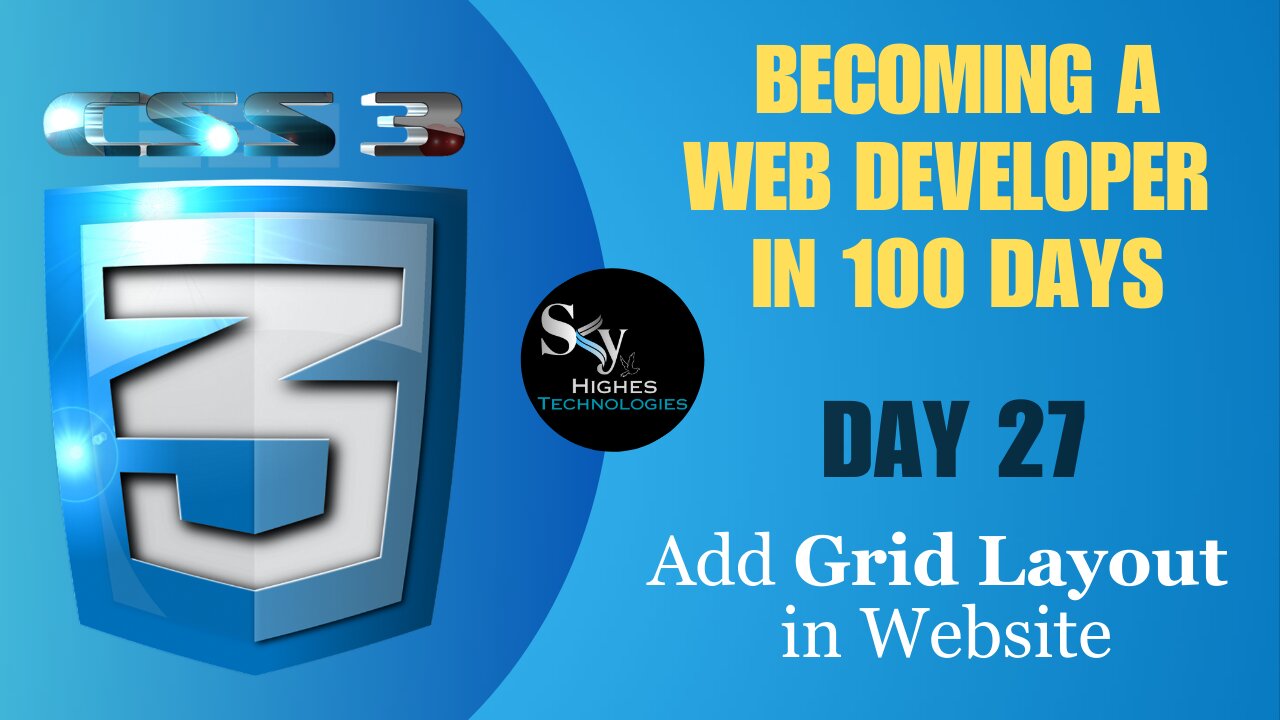Premium Only Content

Learn CSS | Grid Layout Add our Website | Day 27 | Web development course 2023
Grid Layout: A Powerful Tool for Modern Web Design
Grid layout is a powerful and flexible tool in CSS that allows you to create complex and responsive web layouts with ease. It offers a more modern and efficient alternative to traditional methods like floats and positioning.
Here's a deeper dive into grid layout, including its benefits, key principles, and practical examples.
Benefits of Grid Layout:
Simple and intuitive: Grid uses a clear and logical syntax, making it easy to understand and use, even for beginners.
Responsive layouts: Grid allows you to create responsive layouts that adapt seamlessly to different screen sizes and devices, ensuring an optimal user experience across all platforms.
Flexibility and control: Grid offers a high degree of flexibility and control over your layout. You can easily position elements, define columns and rows, and control their size and spacing with great precision.
Clean code: Grid code is often cleaner and more organized than code using floats or positioning, making it easier to maintain and update your codebase.
Modern approach: Grid is the modern standard for web layout and is supported by all major browsers, ensuring your website remains future-proof.
Key Principles of Grid Layout:
Grid container: This is the parent element that holds all the grid items and defines the overall layout structure.
Grid items: These are the individual elements you want to position within the grid, such as text, images, and buttons.
Grid lines: These are the invisible lines that define the columns and rows of the grid. They act as a guide for positioning elements.
Grid areas: These are named sections within the grid that can span multiple columns and rows, allowing for more complex layout configurations.
Key Properties for Grid Layout:
display: This property sets the display type of the element to "grid" to enable grid layout.
grid-template-columns: This property defines the number and size of the columns in the grid. You can use various values like percentages, fractions, or keywords like "fr" for equal-width columns.
grid-template-rows: Similar to grid-template-columns, this property defines the number and size of the rows in the grid.
grid-column and grid-row: These properties specify the position of a grid item within the grid, defining which columns and rows it occupies.
justify-content and align-items: These properties control how grid items are distributed within the container horizontally and vertically, providing options for centering, aligning to edges, or spacing evenly.
gap: This property defines the spacing between grid items, allowing for more flexibility in layout design.
-
 9:11
9:11
Faith Frontline
12 hours agoTucker Carlson SHOCKED As Cliffe Knechtle Reveals God’s Chosen People
611 -
 23:10
23:10
Jasmin Laine
15 hours agoCTV Host Visibly UNCOMFORTABLE As Guest Calls Canadians RACIST—Poilievre Leaves Them SPEECHLESS
8464 -
 20:18
20:18
Fit'n Fire
15 hours ago*NEW* CZ P10C OR Ported -- First 500 Rounds
52 -
 14:41
14:41
Nate The Lawyer
1 day ago $0.21 earnedWhy Hasn’t Raja Jackson Been Arrested Yet?
42613 -
 6:04
6:04
Buddy Brown
2 days ago $0.41 earnedEugene’s SICK Newspaper Cover is a WARNING to Us All! | Buddy Brown
6038 -
 16:23
16:23
Actual Justice Warrior
1 day agoMom Sucker Punched By Repeat Offender In Chicago
3.21K25 -
 56:28
56:28
Professor Nez
1 day ago🚨Not Only is Epstein NOT Going Away… It Just Got Worse!
19.9K23 -
 8:09
8:09
MattMorseTV
16 hours ago $9.43 earnedTrump scores 17th CONSECUTIVE Supreme Court VICTORY.
71.3K58 -
 2:11:25
2:11:25
Side Scrollers Podcast
18 hours agoUK JAILS TV WRITER FOR WRONG THINK + TWITCH ALLOWS CYBERSTALKING + MORE | SIDE SCROLLERS LIVE
30.5K8 -
 10:47
10:47
Nikko Ortiz
1 day agoThese Tik Tok Clips Are Extremely Painful...
51K7